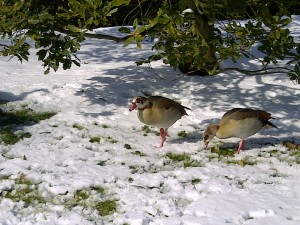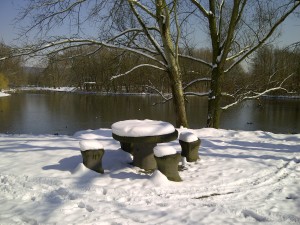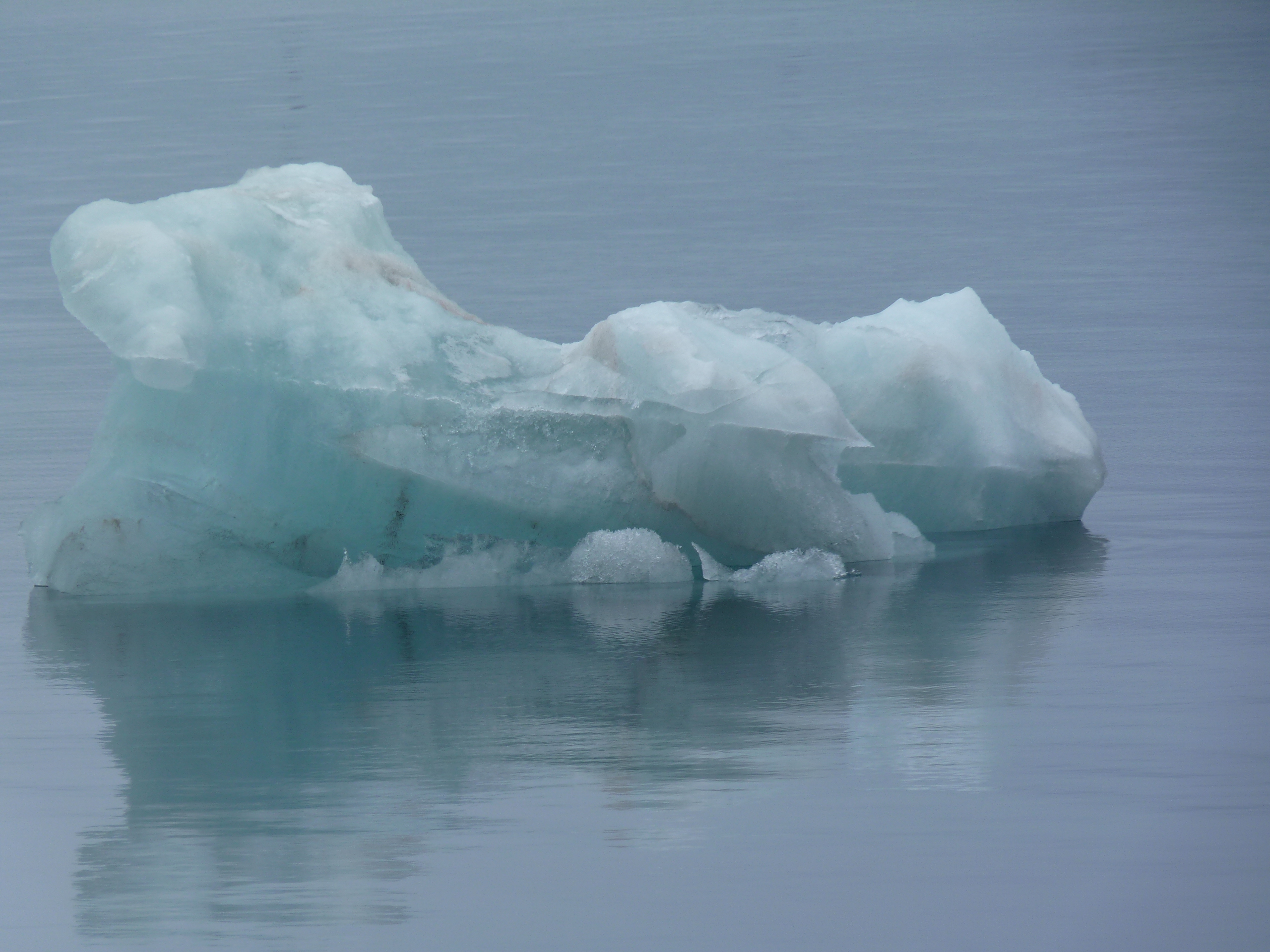Search Results for Tag: wildlife
Greener Arctic will speed up warming
New research predicts that rising temperatures will lead to a massive “greening” or increase in plant cover in the Arctic. In a paper published in Nature Climate Change on March 31st, scientists present new models projecting that wooded areas in the Arctic could increase by as much as 50 percent over the next few decades. They also show that this will accelerate climate warming at a faster rate than previously expected.
In the Ice Blog post of March 11th, A Greener Arctic in a Warmer Climate, I wrote about a study of satellite data showing there have already been considerable changes, with plants growing further north and reaching higher heights than previously in their present locations. The new work, funded by the National Science Foundation, models how the “greening” of the Arctic could continue and what effects it could have.
Richard Pearson, the lead author on the paper and a scientist at the American Museum of natural History’s Center for Biodiversity and Conservation says “such widespread redistribution of Arctic vegetation would have impacts that reverberate through the global ecosystem”. Once again, we have a piece of research demonstrating the worldwide significance of what is happening in the far north of the planet.
The models suggest there could be trees growing hundreds of miles north of the present tree line in Siberia. As well as changing living conditions for flora and fauna, the researchers draw particular attention to the feedback effects which would be produced by having a green rather than a white Arctic. The albedo effect would have the greatest impact, they say. The white snow reflects most of the radiation back to space. “Dark” areas, on the other hand, in this case trees or shrubs, would absorb more sunlight, leading to a further increase in temperature. For the Arctic, that would mean “the more vegetation there is, the more warming will occur”, according to the study. It is the same phenomenon observed when the increased melting of the sea ice gives way to darker water, which absorbs more heat.
You might wonder if the plant growth could offset this warming effect by absorbing atmospheric carbon. But this process happens too slowly for that, says co-author of the study Michael Loranty, from Colgate Unversity.:
“By incorporating observed relationships between plants and albedo, we show that vegetation distribution shifts will result in an overall positive feedback to climate that is likely to cause greater warming than has previously been predicted”, according to Wood Hole Research Center Senior Scientist Scott Goetz, another co-author.
The temperature in the Arctic is already rising at about twice the global rate.
Melting Arctic ice and Europe’s freezing March
It has been an extremely cold start to spring here in Germany and other parts of the European continent this year. Parts of Scotland have been snowed under and lost their electricity supplies. For once, I haven’t had people saying “so much for global warming” etc. Could it be that a majority of people are realising that climate change does not mean a straight, linear, rise in temperature everywhere?
Scientists from the Potsdam Institute for Climate Impact Assessment (PIK) have drawn my attention to a report back in 2010 by Vladimir Petukhov from that organisation indicating that the shrinking Arctic ice (as a result of climate warming) can disturb air streams and change air pressure. This means a higher probability that Europe will get warmer winters more often. Of course there are always various factors involved, but other studies in the past three years have come to similar conclusions.
It may seem like a paradox, but yes, global warming could well be a major factor in bringing us these cool temperatures.
Let me just give you a link to a summary of “Global Warming could cool down temperatures in winter“.
- Spring picnic perhaps? Close to my office. It has melted now, but there is an ICY wind from the north-east.
Polar bear update: “wildlife” or politics?
The Arctic Institute publishes a weekly newsletter “The Arctic this Week” and, not surprisingly, our white furry Arctic residents feature prominently again this time. As the authors, Tom Fries and Kevin Casey point out, they have slipped from the “wildlife” category into the “politics” category, with the debate going on at the CITES meeting. The newsletter went out before the start of the meeting, but it has links to some very interesting background articles on the issue. I recommend a look at their website.
Some ice blog followers drew my attention to links in yesterday’s post which were not working properly. Apologies for any technical hitches. Here are the polar bear links, mine and some of those Tom and Kevin drew my attention to.
Statement by the IUCN polar bear specialists’ group
Polar Bear Politics in the Economist
WWF Tromsö Polar Bear Workshop
Is enough being done to protect polar bears? (International Polar Foundation)
Polar bears to retain “threatened” listing – in Alaska Dispatch
USA, Europe and Russia team up to help bears – in New York Times
Suggestions for further reading welcome!
WWF: human-bear conflict increasing
Hungry polar bears under pressure from climate change are increasingly coming into conflict with people in some regions, said experts at a WWF Workshop in Tromso, Norway, this week. The meeting called on governments to work together to finance and implement ways to keep both bears and people safe.
30 experts from different Arctic regions agreed the polar bear range states – Canada, Norway, Greenland, Russia and the United States – should cooperate to fund, monitor and share conflict reduction measures.
WWF polar bear lead Geoff York said “As sea ice habitat continues to decline, more bears will spend longer periods of time onshore and human activities are also projected to increase in the area, setting the stage for trouble in the years ahead”.
There is a “Range States polar bear conflict working group”. It was also present at the workshop and said it will be presenting a new data tracking system and draft conflict plan at the next meeting of the “Polar Bear Range States” meeting which will be held in Moscow in the autumn.
WWF has designated 2013 as the Year of the Polar Bear and is calling on the countries involved to make firm commitments at the meeting.
So how do you reduce conflict, when bears are hungry and humans in close proximity to areas where they hunt for food? The workshop participants shared ideas including polar bear patrols to help keep bears away from communities, safe storage and disposal of food and rubbish, education on safety measures, deterrents from bear spray to fences and dealing with “problem bears”.
The Ice Blog recently drew attention to a successful project in Canada, which has reduced conflict between bears and locals.
Polar bears are also on the agenda at the CITES meeting in Bangkok at the moment, running until March 14th. The USA is trying to get the bear switched to Appendix I of the convention, which would ban trade in all but “exceptional” circumstances.
This is a different aspect of “polar-bear conflict” and difficult because of traditional hunting practices in some areas. The Economist has an interesting summary in Polar Bear Politics.
WWF Canada helps reduce polar-bear kills
There are estimated to be between 20 and 25 thousand polar bears left in the world. Climate change is the main threat to their survival these days. Hunting is strictly regulated, with quotas for the number allowed to be hunted as part of indigenous Arctic people’s heritage. But what happens when hungry bears, affected by the loss of sea ice, encroach on human territory? Not a good combination. WWF Canada has been involved in a project to set up electric fences – some of them solar powered – to keep the white giants out and reduce the number of bears killed in self-defense – with highly positive results so far. For the first time in at least three years, no bears were killed in defense of life or property in the hamlet of Arviat, in Nunavut in 2012 thanks to a “polar bear conflict reduction” project. The community , in the western Hudson Bay area, had reported increasing visits by polar bears in town in recent years. One reason is thought to be the loss of sea ice through climate change. WWF Canada has helped the locals fund a monitor to patrol the area at night from October to December, when bears are out and about in the Nunavut region. The monitor scares the bears with spotlights and noise. They have also installed electric fences around some of the dog-team pens. 2013 is the WWF’s “Year of the Polar Bear”. The organisation is also helping to fund monitoring programmes to keep track of the number of bears.

























Feedback